One of the most interesting and unique aspects of Louisiana’s landscape is its wide variety of mushrooms. From edible fungi to inedible yet stunning species, these diverse organisms can be found in a variety of habitats.
Common mushrooms in Louisiana include oyster mushrooms, chanterelles, stinkhorns, boletus, morels and puffballs.
Below we’ll discuss common fungi varieties plus how to identify them in the Pelican State. Whether you are a new forager or experienced one, you’ll enjoy the list below.
List of Mushrooms in Louisiana
1. Oyster Mushrooms
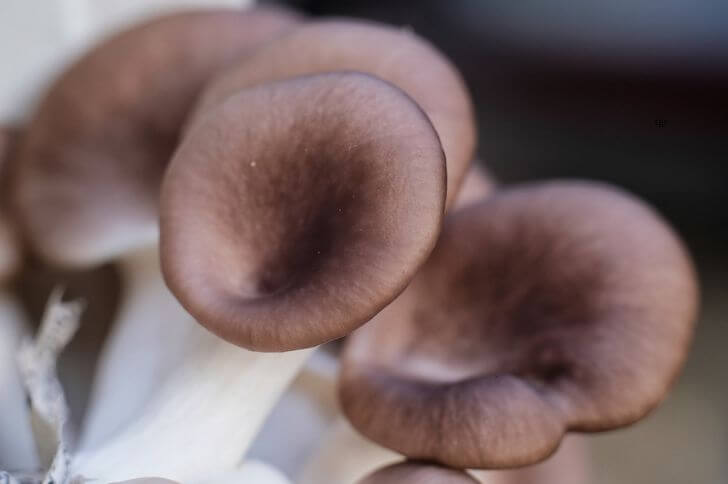
Oyster mushrooms, a popular fungi found in Louisiana, are a type of edible mushroom that have been around for centuries.
Native to Asia, these mushrooms have become increasingly popular in the United States due to their unique flavor. Oyster mushrooms can be found growing on dead wood or trees throughout much of Louisiana.
This type of mushroom is named for its fan-like shape which resembles an oyster shell. It can range in color from white to gray, although some species may exhibit blue or pinkish tones. Their gills run down the stem, unlike most other mushrooms with gills that grow perpendicular to the stem.
They also often form clusters and can be identified by their soft texture as well as their pleasant aroma when crushed.
Furthermore, they have a very short shelf life and should be consumed soon after harvesting them.
2. Chanterelles
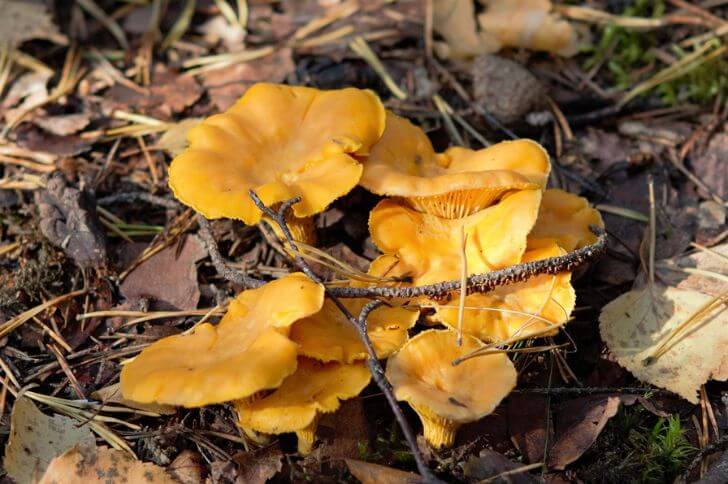
Known for their bright color and meaty texture, chanterelles can be found growing in large patches near hardwood trees. Common chanterelles in Louisiana include:
Craterellus ignicolor
The craterellus ignicolor has a 0.5-2 inch wide cap. Young specimens have a vase-shaped cap with firm inrolled margins. Eventually in maturity, the margins appear wavy and bald.
Another important feature is the presence of crossed veins on its underside instead of true gills. It also has a distinctive fruity aroma and is typically found growing in coniferous forests during late summer and early fall.
Cantharellus lateritius
Also called the smooth chanterelle, this is a highly sought-after edible mushroom of Louisiana is renowned for its delicate flavor and meaty texture which make it ideal for various culinary applications.
One key feature of the smooth chanterelle is its orange to reddish or egg yellow funnel-like cap which measures between 0.8-3.5 inches in diameter. The cap surface is smooth with wavy edges that are slightly curled downwards.
The false gills underneath the cap are forked and run down the stem where they join together before they reach the base. The stem itself is short and thick. This mushroom also has an ‘fruity’ smell.
Cantharellus cinnabarinus
One key characteristic of this mushroom is its vibrant red color, which distinguishes it from other chanterelle species. The cap often has a wavy or lobed shape and may be up to 1.5 inches wide. The underside of the cap is paler with false gills.
Note, unlike other chanterelles, cinnabar chanterelles are rare. They may pop up for 2-4 consecutive seasons and miss for the next 5.
3. Morels
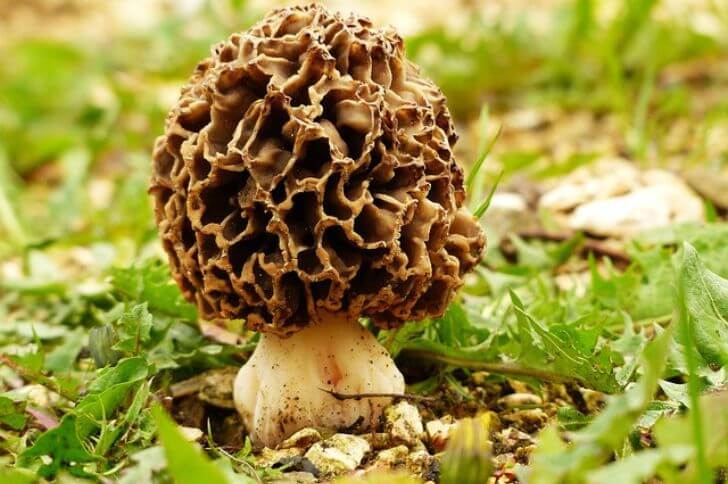
Are there morels in Louisiana? Yes, greys and yellow morels pop up in parts of the Pelican State from February.
These mushrooms are easy to identify because of their unique honeycomb-like pattern. They offer an earthy, nutty flavor that is unlike any other mushrooms in Louisiana.
When foraging for morels we recommend you start the hunt during the second week of February. They often last through April. Also temperatures are a good indicator of the right time to search for morels.
Day temperatures should range in the 60s and 40s for the nights. Also check under oaks, especially white oaks, elms and ash.
4. Ringless Honey mushrooms
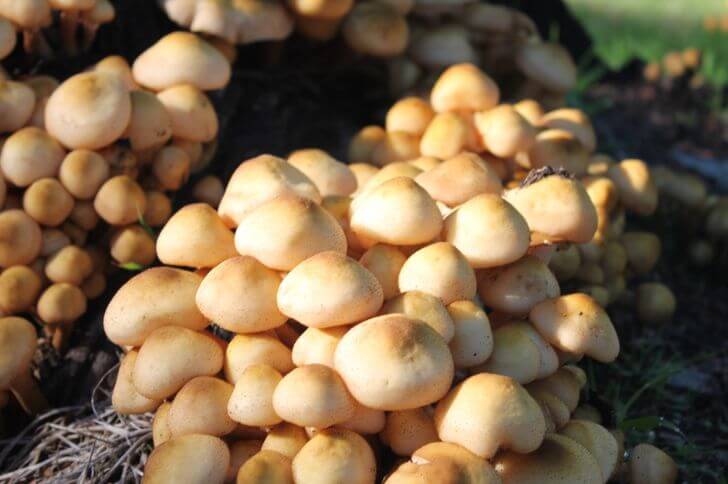
Honeys are another type of edible brown mushrooms in Louisiana. Ringless honey mushrooms, Armillaria tabescens changed to Desarmillaria caespitosa , are edible fungi native to the southeastern United States. Louisiana is no exception.
These mushrooms have been used in the region for centuries and are considered a delicacy by many. They feature a delightful sweet flavor that makes them ideal for adding to dishes such as stews, sauces, stir-fries and more.
In terms of appearance, these mushrooms have a convex, honey brown cap with whitish-brown gills underneath. The stems can grow up to eight inches tall and without rings that characterize members of this family. They can be harvested during the fall months when they’re most plentiful in the wild.
5. Velvet Foot mushrooms
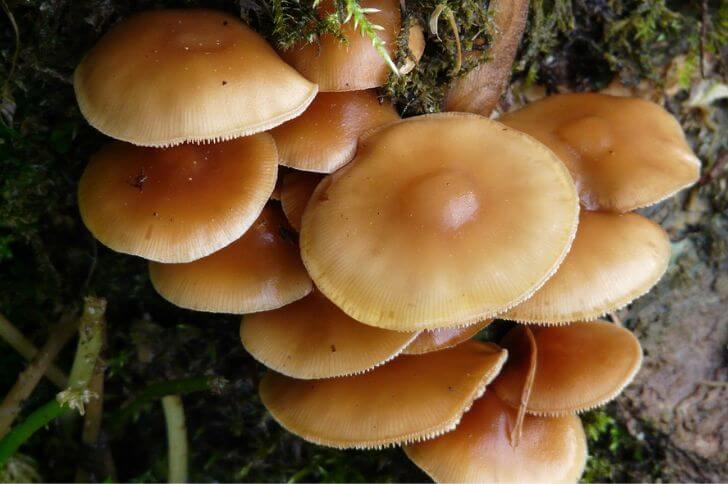
What are winter mushrooms of Louisiana? Velvet foot mushrooms. Also called velvet shanks, these mushrooms do well in cold weather, appearing in late fall through winter.
These distinctive mushrooms can be identified by their velvety appearance and dense, fawn-colored caps. You can spot them in tight clusters on logs and stumps of hardwoods.
6. Wood Blewit
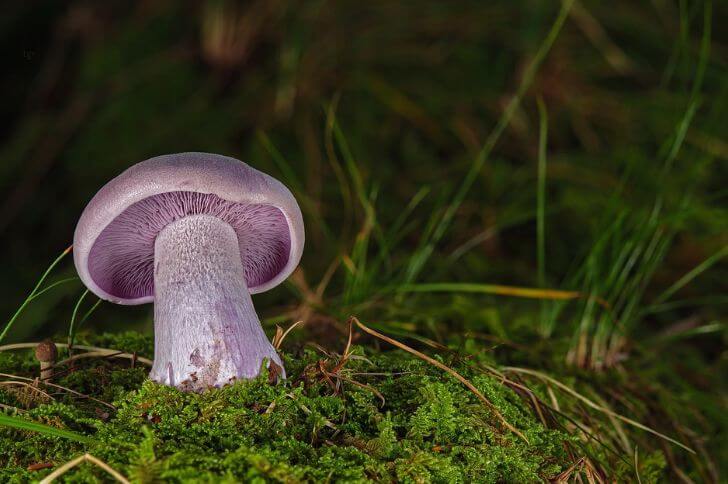
Wood blewit is a type of mushroom that grows in the forests of Louisiana. It has a distinctive purple hue and a pleasant sweet citrus aroma that make it an especially favored mushroom for culinary use.
The wood blewit mushroom grows best during the cooler months when there are more damp days and less sunlight; late autumn through most of winter.
This makes it particularly suited to growing in parts of Louisiana where temperatures are moderate year round.
These mushrooms grow in clusters on the ground and have a distinctive lilac to lavender color. They can be found in grassy areas or among leaf litter in deciduous forests near fallen trees or stumps. The caps of clitocybe nuda mushrooms are convex when they first appear and then flatten out with age, reaching diameters up to 6 inches.
They have a smooth texture which tends to bruise easily, especially near the edges of their caps. The stems are thick, turning brownish with maturity.
7. Lion’s Mane
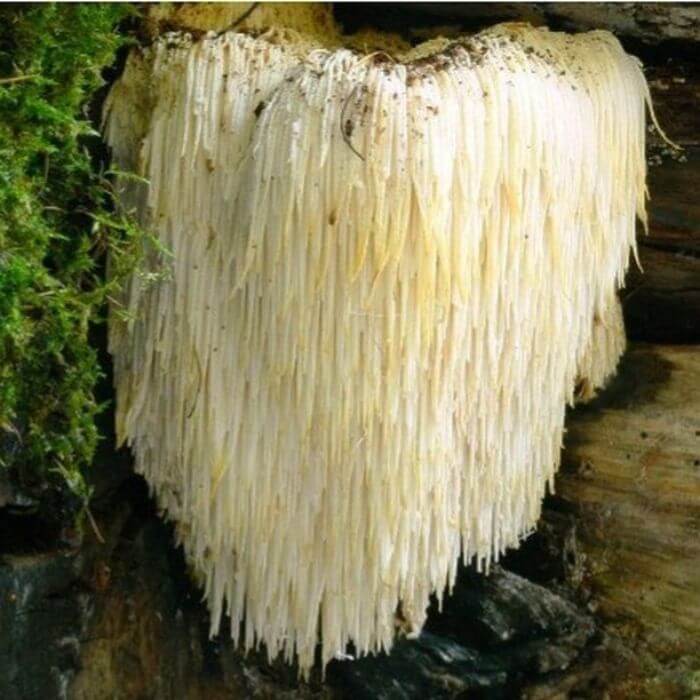
source: nongtrainmxanh
Lion’s mane mushrooms are a great addition to any dish. They have an interesting appearance – their white-tipped ‘hair’ gives them the look of a lion’s mane.
This Louisiana mushroom is common from late summer, growing on dying oaks and maples. The look and taste of lion’s mane mushrooms make them a versatile ingredient that can be used in everything from casseroles to salads.
8. Shrimp of the woods
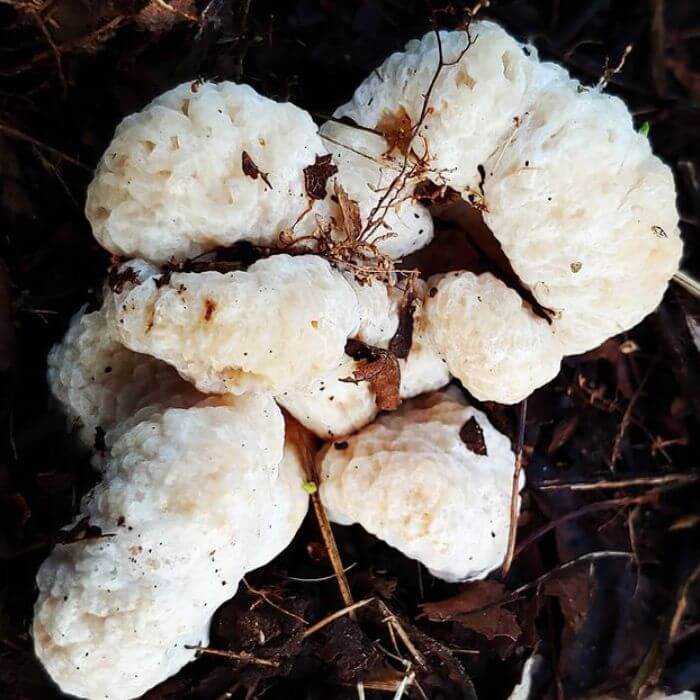
Entoloma abortivum, also called ground prune, shrimp of the woods or arboted entolomas are a unique type of mushroom that are a result of entolomas and honey mushrooms coming together.
Their fruiting bodies are easy to recognize. Their caps are white and bumpy, resembling popcorns. They occur in late summer to fall when honeys are also fruiting. Look for scattered grouping on the ground.
9. Puffballs
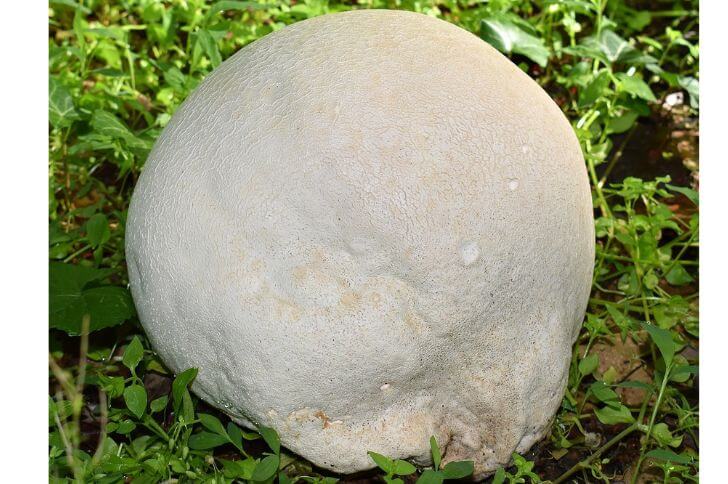
Common puffballs in Louisiana include:
Pear-shaped puffballs
These mushrooms are known for their spongy texture and pale yellowish-brown color. Often referred to as stump puffballs, they grow in clusters on rotting wood.
The tough outer skin is easy to break open, revealing an inner white flesh that contains thousands of spores produced by the fungi.
Purple-spored puffball
Calvatia cyathiformis, colloquially called purple-spored puffball, is a unique puffball species found in LA. It is easily recognized by its distinctive shape and purple spores. Like most common members in its family it has a football-like fruiting body
Peeling puffballs
Peeling puffball, scientific name lycoperdon marginatum, belongs to the family Agaricaceae. One of the most distinct features is its shape.
It resembles a miniature soccer ball with a diameter ranging from 0.4-2 inches. Note the spines on its surface. Young peeling puffballs have white flesh while older species are olive-brown.
10. Maitake (Hen of the Woods)
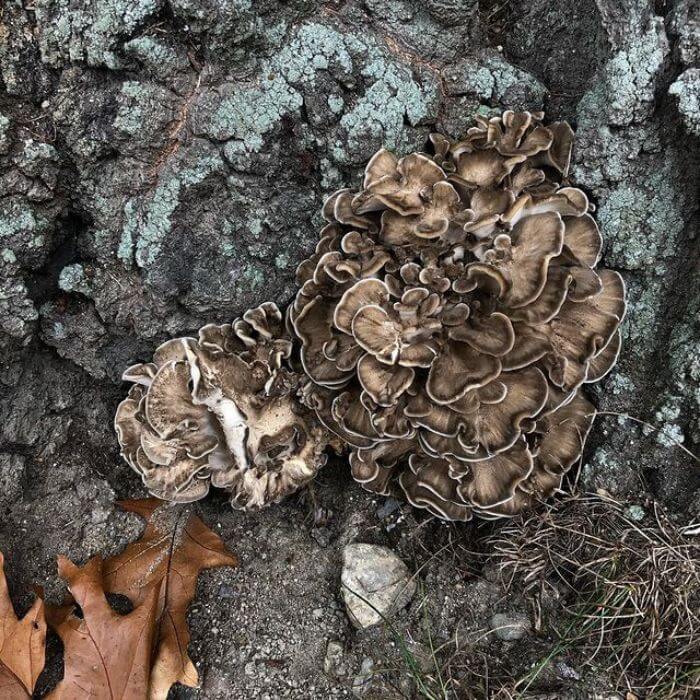
source: cakewalkcakewalk
Maitakes are large, brown and gray fungi that grow in fall. This large mushroom grows from a single stem that then develops fronds. The fronds or caps are densely clustered and grow to about 6 inches wide.
Underneath, fronds have a pure white pore surface. Where can you find maitake? I recommend you pay extra attention around oaks.
Note, the gray-brown color helps them blend with litter around them so take time to examine around potential hosts.
11. Deer Shield mushroom (Pluteus cervinus)
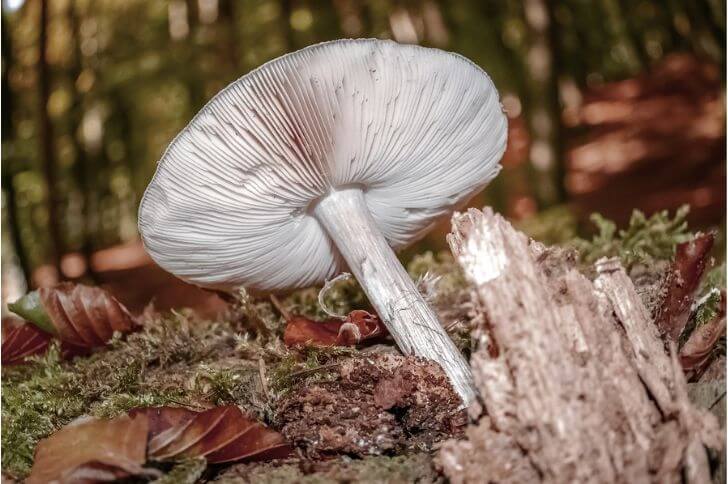
The deer shield mushroom, scientifically known as Pluteus cervinus, is a unique and fascinating species of mushroom.
These mushrooms in Louisiana come in varying shades of brown depending on the age.
On the underside, deer mushrooms have close gills that are whitish in young species turning pinkish with age. If you are looking to taste something new, you’ll love their radish-like taste.
12. Tiger Sawgill (Lentinus tigrinus)
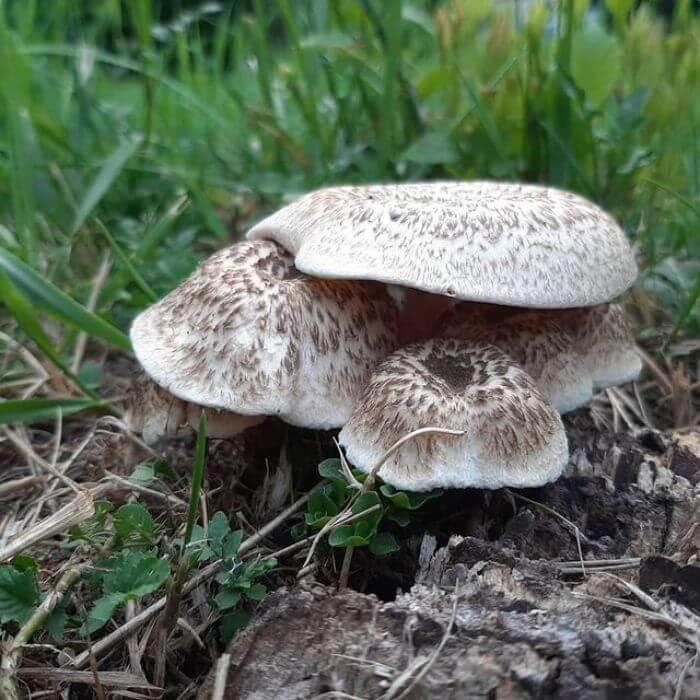
source: lense_wedrowanie_mk
Lentinus tigrinus is a type of white mushroom in Louisiana that belongs to the family polyporaceae.
It is also known as the tiger sawgill due to its unique physical characteristics. This mushroom species can be identified by examining its cap, gills, and stem.
The cap of the tiger sawgill ranges from 0.4-3.1 inches in diameter and is initially convex before maturing into a flattened shape with an irregular margin. Its color varies from white to pale tan with yellowish decurrent gills.
13. Scaly Sawgill (Neolentinus lepideus)
Another white mushroom common in LA is the scaly sawgill. Related to the tiger sawgill above, it shares the same characteristics.
This white fungus can grow up to 4.7 inches across and like the sawgill above has an almost-flat cap with wavy margin in maturity. Also in maturity, its surface has scale-like features.
Its white flesh is tough, requiring longer cooking to soften.
14. Old Man of the Woods
Favoring coniferous forests, strobilomyces strobilaceus or the old Man of the woods, is a fascinating fungus that has no lookalikes which makes identification easy.
This distinctive fungus has a spiky cap that resembles the scales of a pinecone or a fir cone, with colors ranging from brown to grayish-black. The stem is also scaly and can grow up to 3.9 inches tall.
Though this gray mushroom is not visually appealing, it is edible. You can grill or fry the old man of the woods.
15. Turkey Tails
Turkey Tails is a type of polypore mushroom found in many parts of Louisiana. It gets its name due to its striking colors and shape that resemble a turkey’s tail feathers. Scientific name trametes versicolor.
To identify this shelf fungus, you need to look at its physical characteristics. The cap of the mushroom ranges in color from brown to gray and has concentric circles that resemble the pattern on a turkey’s tail feather.
The underside of the cap has tiny pores that release spores when matured. The stem is usually not present, and if it is, it is short and stubby.
Another way to identify is by conducting a spore print test. This involves placing the cap face down on white paper overnight and observing the color of the spores left behind in the morning. Young fungi have a whitish spore print and yellow spore print for older mushrooms.
16. Yellow Patches (Amanita flavoconia)
Amanita flavoconia is a mushroom that belongs to the Amanitaceae family. Commonly known as orange amanita or yellow patches or yellow wart, it is closely related to this red fungus. It is a summer and fall fungus, often growing individually or in scattered groups.
The cap of this species ranges from 1.2-3.5 inches in diameter, with a distinctive orange-yellow color. Young amanitas are bright orange in color with pale yellowish warts and as they age the warts are washed off by rain giving them a bald look.
The gills are white, crowded together, and free from the stalk. Yellow patches are inedible.
17. Column Stinkhorn
Stinkhorns stink and the column stinkhorn is no exception! Column stinkhorns have a distinctive fruit body.
The unique shape of the fruiting body, which resembles an octopus emerging from a spherical base, makes it easy to recognize. However, identifying this species requires more than just its appearance.
The column stinkhorn begins as a small white egg-shaped structure that soon develops into a mature fruiting body with arms extending upwards.
These red arms are covered in spore-bearing material and emit a putrid odor that attracts flies and other insects for dispersal. When young, the entire fruiting body is enclosed in a thin layer of tissue called the peridium which eventually ruptures to reveal the inner arms. Like all stinkhorns, this variety is inedible.
FAQs
Do lion’s mane grow in Louisiana?
Lion’s mane mushrooms are typically found growing on hardwood trees such as oak or maple, which are prevalent in many areas of the United States. However, they require specific environmental conditions such as cool temperatures and high humidity levels to thrive.
While some parts of Louisiana may have these conditions at certain times of the year, it is not a common location for wild lion’s mane growth.
Where can I find chanterelle mushrooms in Louisiana?
One of the best places to find chanterelle mushrooms in Louisiana is in the wooded areas around Lake Pontchartrain. These areas are known for their dense forests and rich soil, which provide ideal growing conditions for these elusive fungi.
Another great spot to look for them is along the banks of local rivers such as the Mississippi River or Bayou Lafourche. Here, you can often find them growing among fallen leaves and other organic debris on the forest floor.
Another popular destination among mushroom hunters is Kisatchie National Forest, located in central Louisiana. This vast forest spans over 600,000 acres and is known for its diverse range of flora and fauna, making it an ideal spot to search for these prized mushrooms.
Another great place is at farmers’ markets and specialty grocery stores. Many local farmers and foragers sell their findings directly to the public, so you can be sure you’re getting fresh and high-quality mushrooms.
What wild mushrooms can you eat in Louisiana?
One common edible mushroom found in Louisiana is the chanterelle. Another popular choice is the oyster mushroom, which resembles an oyster in shape and has a subtle nutty taste. It’s often used in stir-fries or grilled as a side dish.
More adventurous foragers may want to seek out lion’s mane mushroom, puffballs and aborted entolomas.
Conclusion:
The abundance of mushrooms in Louisiana is a testament to the state’s diverse natural resources. Whether you’re cooking up a delectable dish or just in need of unique fungi photographs, a mushroom hunt can be an enriching and enjoyable experience.
With a little knowledge and patience, it’s possible to find many varieties of mushrooms all year round.
source:
Hi There,
My name is Jenny. I’m the Chief Editor at Try Green Recipes and besides making yummy and healthy foods for my kids, grandkids, and friends. I’m new to the blogging world but I believe what I have to share is unique and will bring joy to your home. If you are adventurous and want try something tasty, let’s get started.

